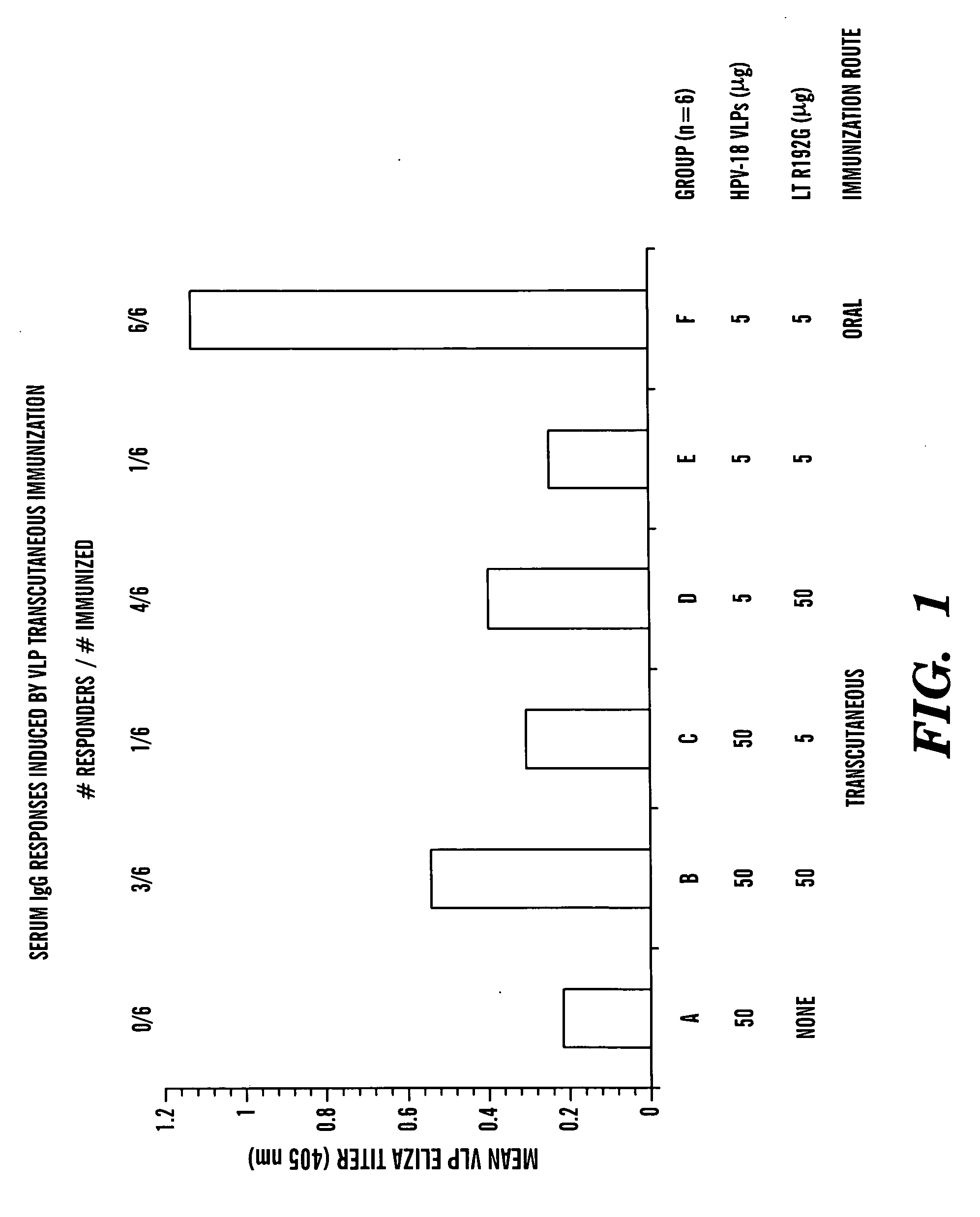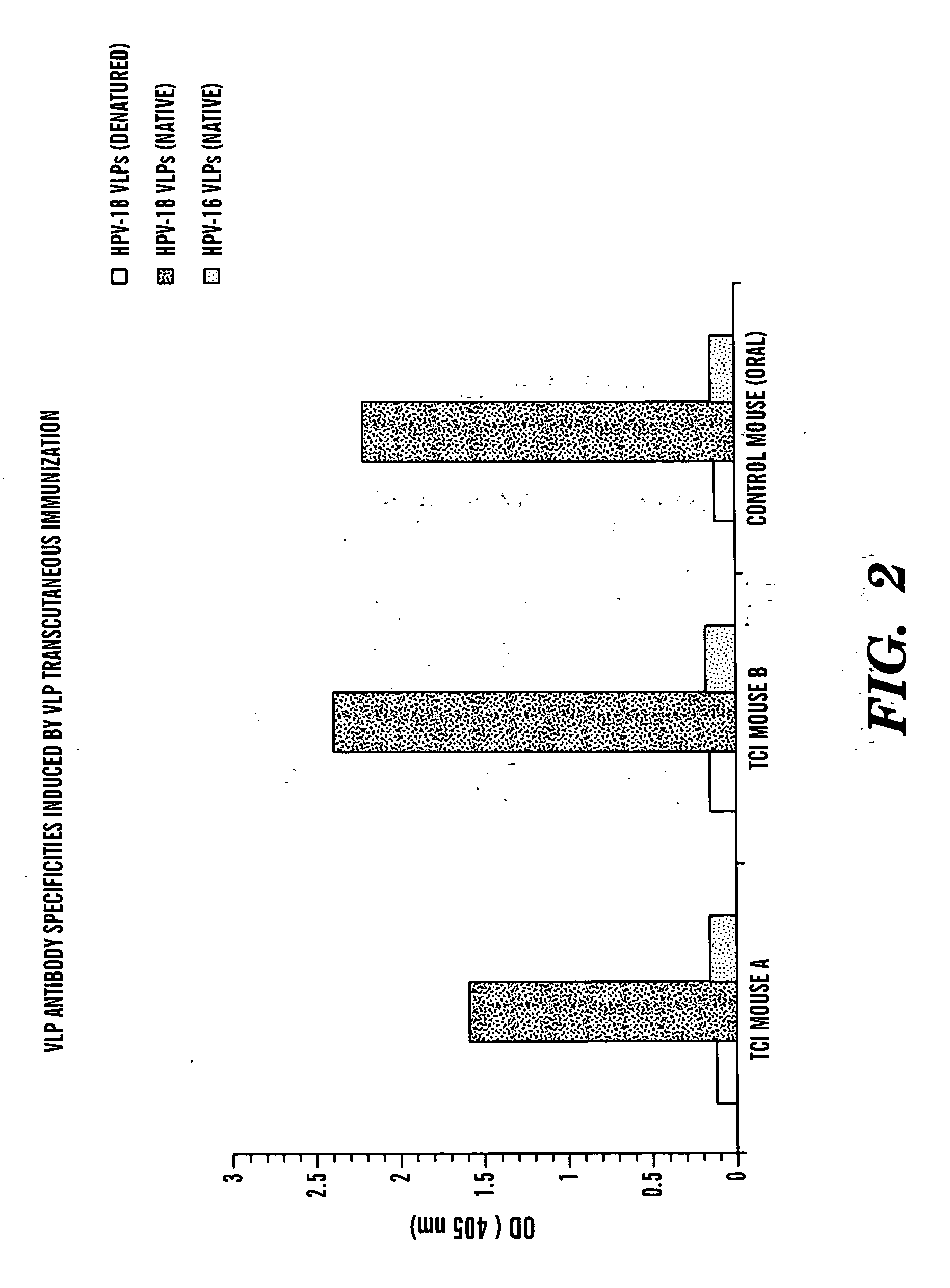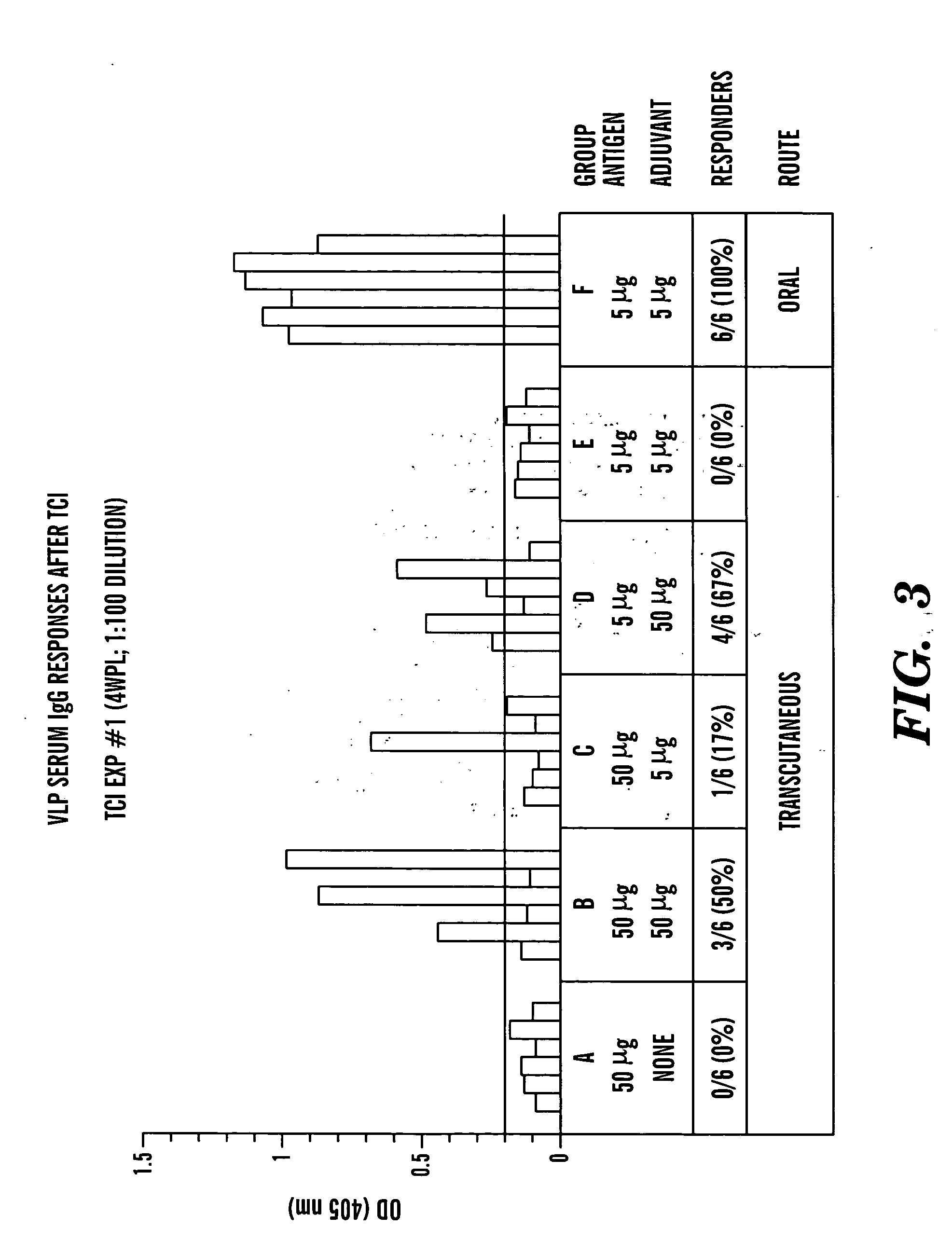Transcutaneous immunization against papillomavirus with papillomavirus virus-like particles
a technology of papillomavirus and immunization, which is applied in the direction of antibody medical ingredients, dsdna viruses, peptides, etc., to achieve the effects of reducing the incidence of cervical cancer, facilitating mass immunization programs, and reducing the number of booster immunizations
- Summary
- Abstract
- Description
- Claims
- Application Information
AI Technical Summary
Benefits of technology
Problems solved by technology
Method used
Image
Examples
example 1
Animals
[0063] Female BALB / c mice were used at ages ranging from 8 to 12 weeks.
[0064] All animals were housed and used in accordance with institutional guidelines.
example 2
Antigens
[0065] Methods used for the production and purification of baculovirus-expressed HPV-18 L1 VLPs has been described previously (Rose et al., “Serological Differentiation of Human Papillomavirus Types 11, 16 and 18 using Recombinant Virus-like Particles,”Journal of General Virology 75:2445-2449 (1994); Rose et al., “Expression of Human Papillomavirus Type 11 L1 Protein in Insect Cells: in vivo and in vitro Assembly of Viruslike Particles,”Journal of Virology 67:1936-1944 (1993), which are hereby incorporated by reference in their entirety).
example 3
Adjuvants
[0066]E. coli LT R192G was produced as previously described (Dickinson et al., “Dissociation of Escherichia coli Heat-Labile Enterotoxin Adjuvanticity from ADP-Ribosyltransferase Activity,”Infection &Immunity 63:1617-1623 (1995), which is hereby incorporated by reference in its entirety) and reconstituted in sterile PBS (1 mg / ml) prior to use.
PUM
| Property | Measurement | Unit |
|---|---|---|
| Immunogenicity | aaaaa | aaaaa |
Abstract
Description
Claims
Application Information
 Login to View More
Login to View More - R&D
- Intellectual Property
- Life Sciences
- Materials
- Tech Scout
- Unparalleled Data Quality
- Higher Quality Content
- 60% Fewer Hallucinations
Browse by: Latest US Patents, China's latest patents, Technical Efficacy Thesaurus, Application Domain, Technology Topic, Popular Technical Reports.
© 2025 PatSnap. All rights reserved.Legal|Privacy policy|Modern Slavery Act Transparency Statement|Sitemap|About US| Contact US: help@patsnap.com



